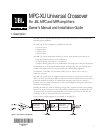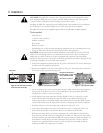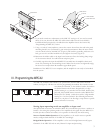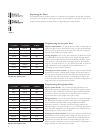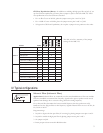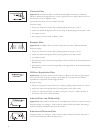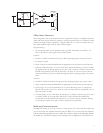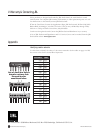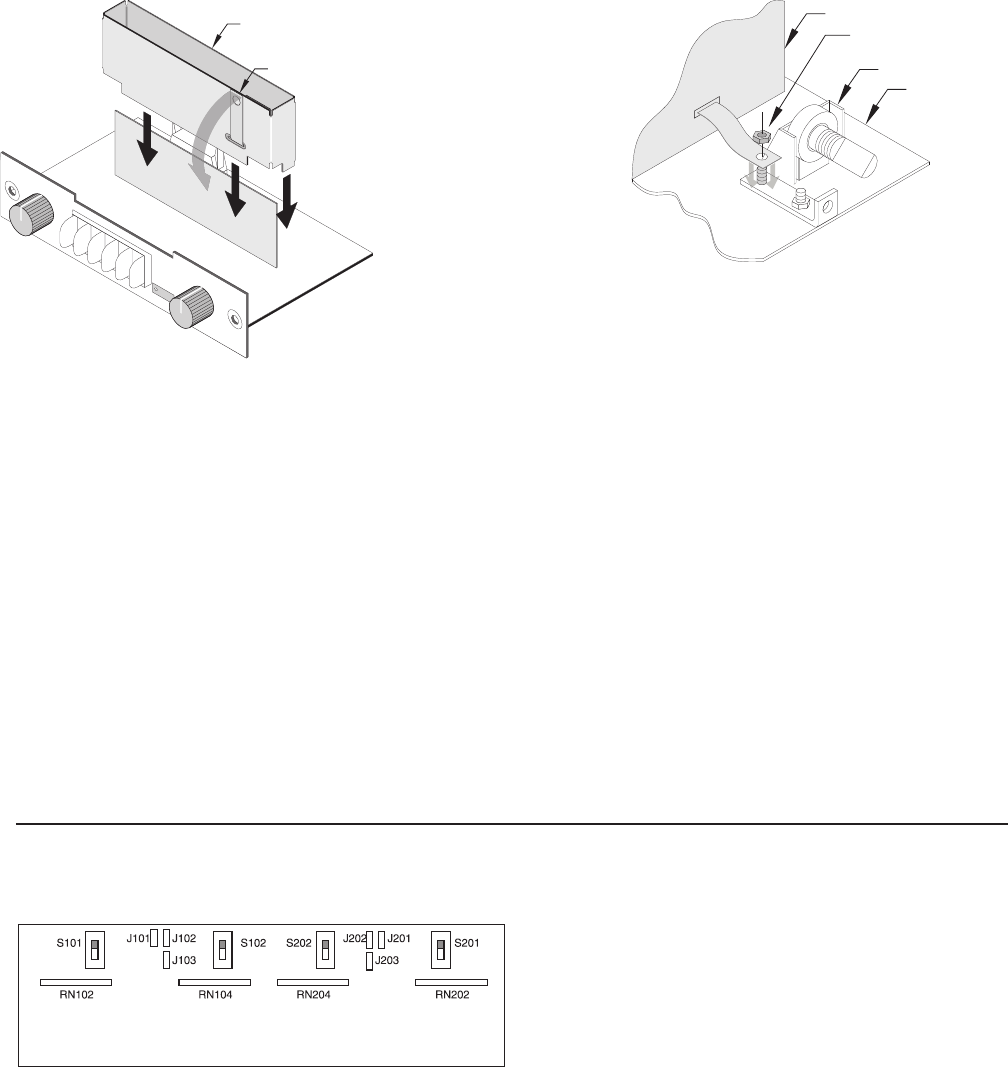
3
Figure 5. The MPC-XU’s switches, jumpers, and resistor networks.
III. Programming the MPC-XU
The MPC-XU board has four switches, six 3-pin headers, and four SIP resistor network
sockets (see Figure 3). All these are used for programming the module. The circuitry for the
two channels is identical, so the switches, headers and sockets
are divided between them: those designated by a 3-digit
number starting in a 1 (switches S101 and S102, headers J101,
J102 and J103; and SIP resistor network sockets RN102 and
RN104) are for Channel 1, while those with a 3-digit number
starting in a 2 are for Channel 2. The following instructions
will use an x in place of the first digit, except where a specific
channel reference is necessary.
Setting input operating mode on amplifier or input card
The input board or accessory on which the MPC-XU is installed has provisionsswitches or
headersfor setting the operating mode of the amplifier. In the signal flow, the MPC-XU is
located after these switches or headers, so its operation is affected by the mode setting.
Stereo or Parallel Mode OperationIf the amplifier is to be used in stereo or parallel
modes, configure both channels of the MPC-XU accordingly.
Bridged Mode OperationIf the amplifier is to be used in bridged mono mode, bypass
Channel 2 of the MPC-XU and use only Channel 1s input and processing.
NOISE SHIELD
TA B
#4-40 NUT
CH.1 GAIN CONTROL
NOISE SHIELD
INPUT PANEL PCB
8 If you need to make any adjustments to the MPC-XU settings or if you need to record
them, do so now, because the MPC-XU will be inaccessible once the noise shield is
installed and the input panel is re-installed into the amplifier chassis. See Section III,
Programming the MPC-XU, below.
9 Using a ¼-inch (6.3 mm) nutdriver, remove the outer 4-40 nut from the stud in the panel
mounting bracket, next to Channel 1s gain control potentiometer. Place the noise shield
over the circuit board of the MPC-XU (Figure 3) and bend the grounding tab down so its
hole goes over the stud. Re-install the nut, and tighten it securely (Figure 4).
10 Reconnect the ribbon cable to the input board connector. Press the locking clamp wings
of the connector closed. You will feel them snap into place.
11 Carefully reposition the input board/MPC-XU assembly into the amplifier chassis and
secure it by fastening the two mounting screws. Make sure the screws are tightened snugly,
but do not over-torque them. Re-install the upper blank panel.
Installation of the MPC-XU is now complete, and the amplifier is now ready to be installed
into the system.
Figure 3 Figure 4



